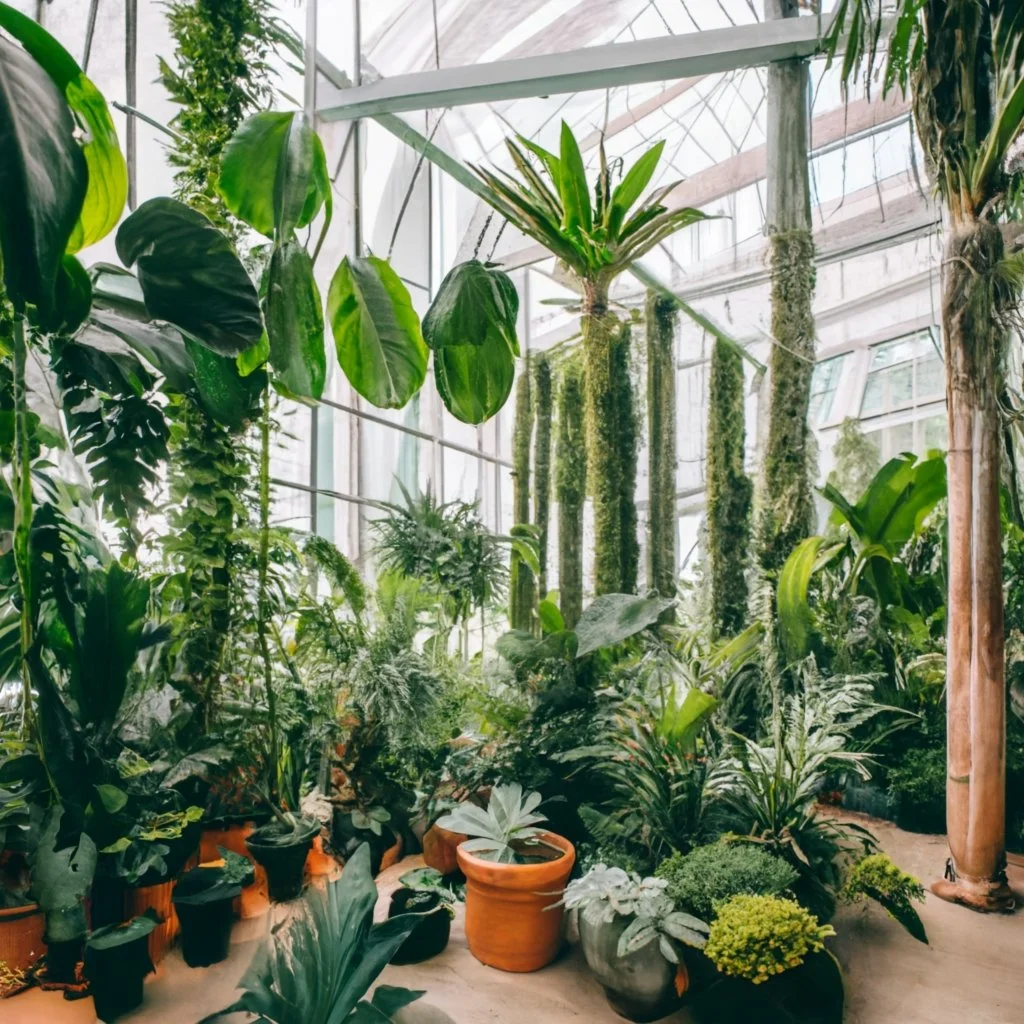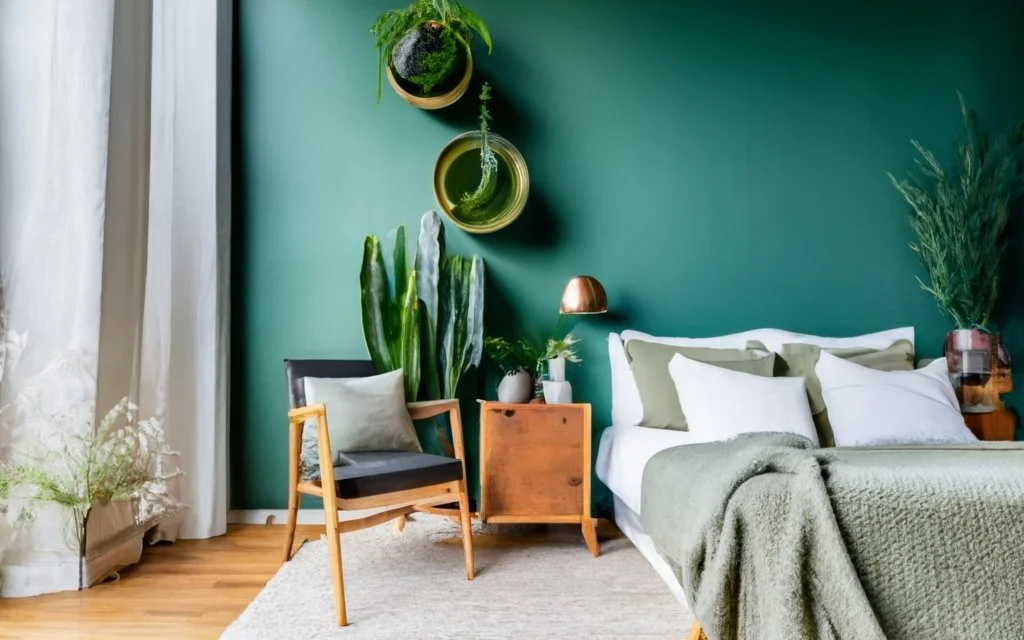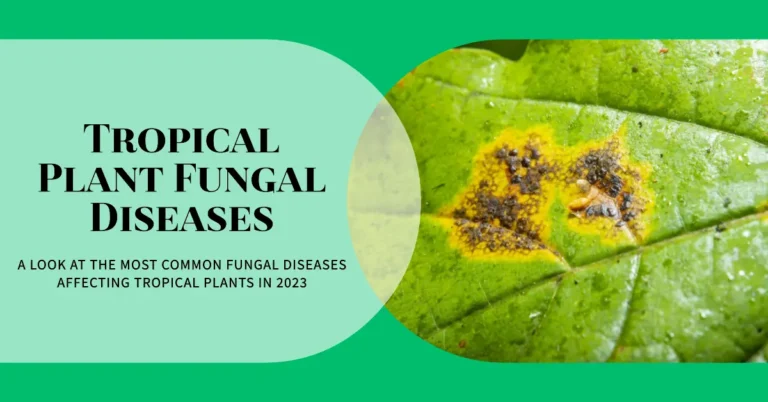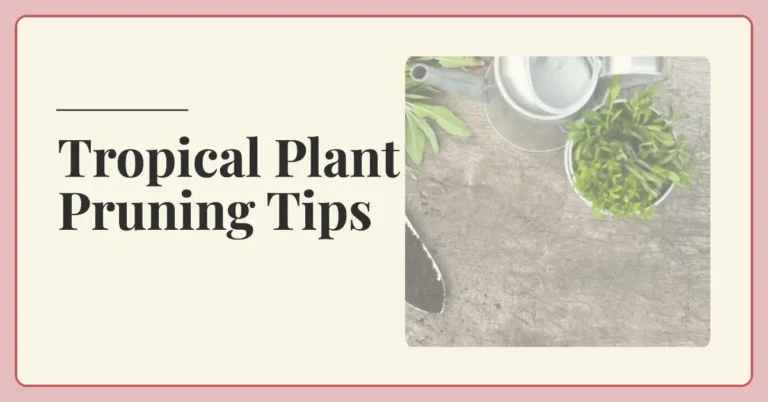5 Air-Purifying Tropical Plants You Need
Discover the Purifying Powers of Tropical Plants

Delve into the world of purifying tropical plants and uncover how these lush green wonders aren’t just about aesthetic appeal. They house a wealth of benefits that transcend visual allure, playing a crucial role in enhancing indoor air quality. Let’s venture into the purifying journey these tropical gems embark on to purify your home environment and uplift your well-being.
Air Purification at Its Best
Tropical plants, nature’s air-purifying agents, excel at removing harmful toxins from the air, giving you a fresh and clean oxygen supply. Here’s how they embark on this purifying journey:
- Natural Air Detox: Engaging in photosynthesis, these plants absorb carbon dioxide and release oxygen. This detoxification ritual helps to rejuvenate and refresh your indoor atmosphere.
- Toxin Tacklers: Some tropical species further showcase their might by effectively filtering out prevalent household pollutants like formaldehyde, benzene, and trichloroethylene, acting as natural air cleaners and reducing the concentration of harmful chemicals in your home.
Boosting Your Mood and Reducing Stress
But their gifts don’t end with air purification. Tropical plants carve out a nurturing space, fostering tranquility and a deep-seated connection with nature which can be a balm to your mental well-being.
So why not consider incorporating these vibrant green entities in your home? They will infuse beauty and vitality into every nook and corner and foster cleaner indoor air quality, offering a soothing ambiance for you to revel in daily.
Understanding the Importance of Air Purification
In an era grappling with increasing air pollution, safeguarding the sanctity of indoor air quality has emerged as more critical than ever. Let’s delve deeper into the pivotal role of air purification in buttressing our overall quality of life:
Preserving Respiratory Health
Polluted air stands as a formidable adversary to our respiratory system. By purifying the indoor air, we stand a chance to reduce the risks of health ailments such as asthma and bronchitis, ensuring a fresh and clean supply of oxygen for our lungs.
Enhancing Mental Well-Being
The saga of benefits continues with a positive impact on mental health. Cleaner air can enhance cognitive function and foster a calming atmosphere that spells relaxation and tranquility, weaving a nurturing cocoon for your mind.
Recognizing the urgency of air purification empowers us to foster a healthier home environment, setting the stage for physical well-being and nurturing mental health.
Top Purifying Tropical Plants for Your Home

Keen on fostering a healthier living environment? Here is a curated list of tropical plants that are not only visually appealing but also champs at purifying indoor air:
| Plant | Key Features | Air-Purifying Abilities |
|---|---|---|
| Snake Plant | – Upright leaves – Low maintenance | Filters out formaldehyde and benzene |
| Peace Lily | – Dark green leaves – White flowers | Efficient at removing pollutants such as ammonia and xylene |
| Bamboo Palm | – Thrives in low light conditions – Tropical appearance | Battles formaldehyde and benzene in the air |
Introducing these purifying tropical plants into your home elevates its aesthetic charm and crafts a healthier living space for you and your family. Why not invite these plants’ beauty and purifying capabilities into your indoors?
How to Choose the Right Tropical Plants for Your Space
When choosing the right tropical plants for your space, it’s important to consider several factors. First and foremost, assess the amount of natural light your indoor area receives. Tropical plants generally thrive in bright, indirect sunlight, so if you have a room with large windows or plenty of natural light, you’ll have more options to choose from. On the other hand, if your space is darker or has limited access to sunlight, opt for tropical plants that can tolerate lower light conditions.
Another factor to consider is the size of your space. If you have a small apartment or limited floor space, look for compact tropical plants such as peace lilies or snake plants that fit nicely on tabletops or shelves. However, if you have a larger area like a living room with high ceilings, consider taller varieties like palm trees or bird of paradise plants that can add height and drama to your space.
Lastly, think about how much time and effort you are willing to invest in plant care. Some tropical plants require more attention than others in terms of watering frequency and humidity levels. If you’re new to plant parenting or don’t have much time for maintenance, choose low-maintenance options like pothos or ZZ plants that are known for their resilience and ability to thrive, even with minimal care.
By considering these factors – lighting conditions, available space, and maintenance requirements – you’ll be able to select the perfect tropical plants that will not only enhance the aesthetics of your home but also thrive in their new environment without causing too much hassle for you as their caretaker.
Maintenance Tips for Keeping Your Air-Purifying Tropical Plants Thriving

Regular maintenance is essential to ensure that your air-purifying tropical plants thrive and continue to improve indoor air quality. Here are a few tips to help you keep these plants healthy and vibrant.
Firstly, pay attention to watering. While tropical plants generally require more moisture than other houseplants, it’s important not to overwater them. Check the soil regularly by inserting your finger about an inch deep – if it feels dry, it’s time to water. Be sure not to let the plant sit in standing water, as this can lead to root rot. Additionally, misting the leaves occasionally will help replicate their natural humid environment.
Secondly, provide adequate sunlight for optimal growth. Most tropical plants thrive in bright but indirect light conditions. Place them near windows or choose well-lit areas within your home where they can receive filtered sunlight throughout the day. If you notice that your plant isn’t growing as vigorously or its leaves are turning yellowish, consider adjusting its position closer or further away from a light source accordingly.
Lastly, periodic pruning is necessary for maintaining the shape and health of your air-purifying tropical plants. Remove any dead or yellowing leaves promptly using clean scissors or shears sterilized with rubbing alcohol before each cut. Regular pruning promotes new growth and prevents overcrowding within the plant’s foliage.
By following these simple maintenance tips, you can ensure that your air-purifying tropical plants remain thriving and continue purifying the air in your living space effectively without much effort on your part!
• Pay attention to watering:
– Check the soil regularly by inserting your finger about an inch deep
– Water when the soil feels dry, but avoid overwatering
– Do not let the plant sit in standing water to prevent root rot
– Mist the leaves occasionally to replicate their natural humid environment
• Provide adequate sunlight:
– Most tropical plants thrive in bright but indirect light conditions
– Place them near windows or well-lit areas with filtered sunlight throughout the day
– Adjust their position closer or further away from a light source if growth is affected
• Perform periodic pruning:
– Remove dead or yellowing leaves promptly using clean scissors or shears sterilized with rubbing alcohol before each cut
– Regular pruning promotes new growth and prevents overcrowding within the foliage of air-purifying tropical plants
Following these simple maintenance tips ensures that your air-purifying tropical plants remain healthy, vibrant, and effective at purifying the air in your living space.
Creative Ways to Incorporate Tropical Plants in Your Home Decor
Using hanging planters is one creative way to incorporate tropical plants into your home decor. Hanging planters not only saves space but also adds a unique touch to any room. You can hang them from the ceiling or mount them on the walls for a stunning visual display. Consider mixing different types of tropical plants in varying sizes and colors to create an eye-catching arrangement.
Another fun idea is to use tropical plants as centerpieces or focal points in your living spaces. Place a large potted palm or banana leaf plant in the corner of your living room, or place smaller potted tropical plants on side tables or shelves. These vibrant greens will instantly liven up any space and bring a touch of nature indoors.
If you’re feeling adventurous, consider creating a vertical garden with tropical plants. This involves mounting small pots onto a wall or using specialized vertical garden systems that allow you to grow multiple plants vertically. Not only does this make for an interesting conversation piece, but it also maximizes limited space while adding beauty and freshness to your home.
By incorporating these creative ideas into your home decor, you can transform your living spaces into lush oases that evoke feelings of relaxation and serenity. So go ahead and let the vibrant colors and exotic foliage of tropical plants breathe new life into every corner of your home!
Common Mistakes to Avoid When Caring for Air-Purifying Tropical Plants
When caring for air-purifying tropical plants, it’s important to avoid some common mistakes that can hinder their growth and overall health. One mistake is overwatering. Tropical plants thrive in humid environments, but too much water can lead to root rot and other fungal diseases. It’s essential to allow the soil to dry out slightly between waterings and ensure proper drainage.
Another mistake is placing your tropical plants in areas with insufficient lighting. While these plants do well in indirect sunlight, they still need a certain amount of light to photosynthesize effectively. Placing them in dimly lit corners or far away from windows can result in weak growth and leggy stems. Find a bright spot near a window where they can receive adequate light throughout the day.
Lastly, neglecting regular pruning and maintenance can be detrimental to the health of your air-purifying tropical plants. Over time, these plants may become overgrown or develop dead leaves and branches that need removal. Regularly inspect your plants for any signs of damage or disease, trim off dead foliage, and promote healthy growth by cutting back excessive growth.
By avoiding these common mistakes when caring for air-purifying tropical plants, you’ll be able to create an environment where they thrive while improving indoor air quality naturally with their purifying abilities. Remember not to overwater them, provide sufficient lighting, and maintain regular pruning practices for optimal plant health.
Health Benefits of Breathing Cleaner Air in Your Living Space

Breathing cleaner air in your living space can have numerous health benefits that contribute to overall well-being. One major advantage is improved respiratory function. When the air you breathe is free from pollutants and allergens, your lungs are able to function more efficiently, reducing the risk of respiratory issues such as asthma and allergies.
In addition to better lung health, breathing cleaner air can also boost your immune system. Harmful particles in the air can weaken your body’s defenses, making you more susceptible to illnesses and infections. By purifying the air in your home with tropical plants, you create a healthier environment that supports a stronger immune system.
Furthermore, clean indoor air has been linked to improved cognitive function and mental clarity. Studies have shown that exposure to high levels of indoor pollutants can impair concentration and memory. On the other hand, breathing fresh air has been found to enhance productivity and focus, leading to increased overall cognitive performance.
Incorporating tropical plants into your living space for better air quality improves your physical health and promotes mental well-being. Breathing cleaner air allows you to enjoy a healthier lifestyle with fewer respiratory problems, strengthened immunity, and enhanced cognitive abilities – all contributing factors towards an improved quality of life.
Enhancing Your Well-being with Air-Purifying Tropical Plants
Adding air-purifying tropical plants to your home can greatly enhance your overall well-being. These plants improve the air quality by removing toxins and releasing oxygen, and they also have numerous other benefits for your health and happiness.
Firstly, having greenery in your living space has been shown to reduce stress levels and promote relaxation. Studies have found that being surrounded by nature, even if it’s just a few potted plants indoors, can help lower blood pressure and decrease feelings of anxiety. The calming effect of tropical plants can create a soothing atmosphere that allows you to unwind after a long day.
Additionally, these air-purifying plants can boost your mood and increase productivity. Research has indicated that exposure to natural elements like foliage can improve cognitive function and concentration. By incorporating tropical plants into your home decor, you create an environment that promotes mental clarity and creativity.
Furthermore, indoor greenery provides a visual connection with nature, linked to improved overall well-being. Simply looking at vibrant leaves or colorful flowers can evoke feelings of joy and contentment. The presence of tropical plants in your living space adds beauty and connects you with the natural world outside.
Incorporating air-purifying tropical plants into your home is not just about aesthetics; it’s about enhancing every aspect of your well-being – from physical health to mental wellness. So why not bring some lush greenery indoors? Your mind and body will thank you for it!
Inspiring Examples of Indoor Spaces Transformed by Tropical Plants
One example of how tropical plants can transform an indoor space is by creating a lush and vibrant atmosphere. By incorporating large, leafy plants such as the Monstera deliciosa or the Bird of Paradise, you can instantly add a touch of tropical paradise to your home. These plants have bold and dramatic foliage that brings life and energy into any room. Placing them near windows or in well-lit areas allows their leaves to catch the sunlight, creating beautiful patterns on walls and floors.
Another inspiring way to use tropical plants is by using hanging planters or macrame holders to display cascading vines like the Devil’s Ivy or String of Pearls. These trailing plants not only add visual interest but also make use of vertical space, making small rooms appear larger. The delicate tendrils create an ethereal effect as they dangle from shelves or hooks, adding a whimsical touch to your interior decor.
Lastly, consider placing potted palms like the Areca Palm or Kentia Palm in corners or empty spaces that need greenery. These tall and graceful trees bring height and elegance to any room while providing a sense of tranquility with their swaying fronds. These majestic palms create a calming ambiance reminiscent of being on vacation in a tropical destination.
Incorporating tropical plants into your indoor spaces can truly transform them into havens filled with natural beauty and serenity. Whether it’s through vibrant foliage, cascading vines, or towering palm trees, these inspiring examples show just how much impact these botanical wonders can have on our living environments. So go ahead and bring some tropics into your home – you won’t be disappointed.
FAQs
What are the benefits of adding tropical plants to your home?
Tropical plants add beauty and a touch of nature to your indoor spaces and provide various benefits, such as improving air quality, reducing stress, increasing humidity, and boosting overall well-being.
Why is air purification important?
Air purification is important because it helps remove harmful toxins and pollutants from the air we breathe. This can greatly improve indoor air quality, reduce the risk of respiratory issues, and promote a healthier environment.
Which tropical plants are best for improving indoor air quality?
Some top tropical plants known for their air-purifying properties include the Snake Plant, Peace Lily, Boston Fern, and Areca Palm. These plants effectively remove pollutants and release fresh oxygen into the air.
How can I choose the right tropical plants for my space?
When choosing tropical plants, consider factors such as the amount of natural light available, your home’s humidity levels, and the space’s size. Research specific plant requirements and choose plants that thrive in the conditions you can provide.
How do I maintain air-purifying tropical plants?
To keep your air-purifying tropical plants thriving, make sure to provide them with the right amount of light, water them appropriately, and keep a check on humidity levels. Regularly dust the leaves, trim or remove dead foliage, and fertilize as needed.
How can I incorporate tropical plants into my home decor?
Get creative by placing tropical plants in stylish pots or hanging them in macrame plant hangers. Use them as centerpiece decorations, create a vertical garden, or place them strategically to add a pop of color and life to your living spaces.
What are common mistakes to avoid when caring for air-purifying tropical plants?
Some common mistakes include overwatering or underwatering, placing plants in inappropriate light conditions, neglecting to clean the leaves, and forgetting to check for pests. Avoid these mistakes to ensure the health and well-being of your plants.
What are the health benefits of breathing cleaner air in your living space?
Breathing cleaner air can improve respiratory health, reduce allergies and asthma symptoms, improve sleep quality, increase energy levels, and enhance overall well-being.
How can air-purifying tropical plants enhance my well-being?
Air-purifying tropical plants can enhance your well-being by providing cleaner air, reducing stress levels, increasing concentration and productivity, and creating a calming and visually pleasing environment.
Can you provide some inspiring examples of indoor spaces transformed by tropical plants?
Certainly! Imagine a cozy reading nook with a hanging Boston Fern, a vibrant living room adorned with a variety of tropical plants, or a minimalist bedroom with a Snake Plant as a focal point. These examples show how tropical plants can transform any indoor space into a green oasis.










